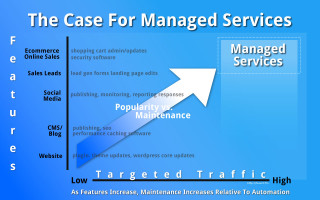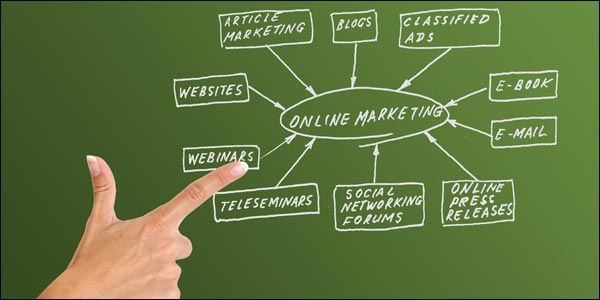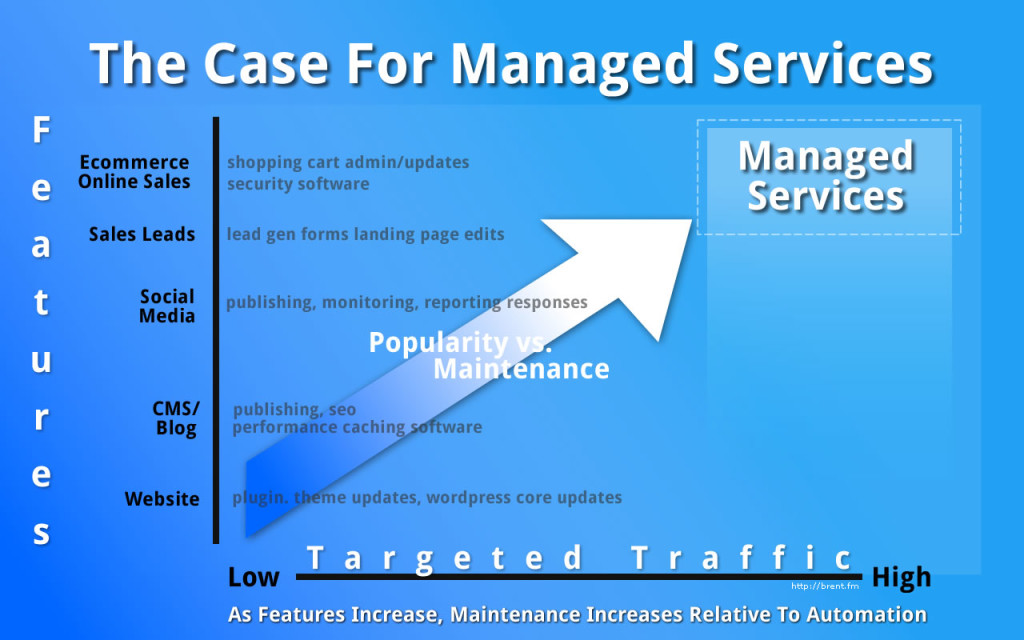What is a “Digital Business Asset Portfolio” and why do you need one?
This article was written to help small business owners identify digital assets, know when to manage them and help prevent loss.
Brick and mortar businesses have furnishings, equipment and to a large extent, things you could see, touch and sell. Today’s online business owner needs to be aware when they are creating something similar. They need to know when they have created something that will become an asset versus something that will not gain in value or perhaps become a liability. Unlike some physical assets, digital assets can be transferred in the form of rights or licensed to a buyer at the time you sell your digital business.
Valuations are changing rapidly. My goal is not to identify a list of assets as much as creating an awareness in your mind.
Let’s start with an easy example, domain names. You probably have one or more that you already think are valuable. You’re probably wrong. But if it has a dot-com extension and you’ve already received an offer from someone to buy it, in writing, then it could be valuable. It could be an asset. Dot-com domains have a certain scarcity. Like real property, virtual property is more valuable when it’s scarce. Domain names alone are usually not that valuable unless your business buys and sells domain names or your last name is McDonald and you own mcdonalds.com. A domain name that includes your brand name and a website is a business asset. Yes, domain names can be stand-alone digital assets but too often the subjectivity of domain names make them difficult to measure in terms of real value. Like “real property” domains names also have a highest and best use. A portfolio of domain names that protect your business or brand may add value and are kept in your digital asset portfolio. Domain names don’t drive sales like other assets. Keyword dominance and links from authoritative pages to your landing pages are more valuable.
Currently one of the most valuable digital business asset is your Inbound-link Portfolio. The quality and quantity of your inbound links (IBLs) drive the value of your link portfolio. If you have an IBL portfolio, you need to measure and understand it’s value. Then you need to properly provision management resources.
Authoritative posts that continually rank and perform well in search results can be business assets. Historical trending, cost per click, customer acquisition costs and correlative analytics can be used to help determine the value of the content and whether or not it’s a portfolio asset. When you publish for your brand, you should be investing in content that will last decades, maybe longer.
Old posts that provide information in an way that cannot be easily improved upon are great but they must be findable. Over time great articles and posts can be updated. When web professionals and other writers and webmasters create links to authoritative posts, those links may never go away. Wouldn’t it be nice if your mutual funds had the same lasting power?
Professionally produced images and videos are more expensive. If done properly interactive or experiential media can have greater lasting power as society continues to read less and learn more from rich media. Greek Myths are reinvented over and over again yet the original stories retain their value. Although Henry David Thoreau may disagree, you don’t need to learn the language of the author to appreciate their story. If your imagery has been created in a way that makes it especially authoritative as is sometimes the case with infographics, value is retained in the content.
Same goes for short videos that communicate something so perfectly and succinctly, like TEDEd Videos that it’s hard to improve upon. It becomes easier to just link to the infographic or video than to recreate. This is gold for a brand seeking long term content ROI as with most content that goes into your digital asset portfolio.

Digital Business Assets
- Branding assets, guides
- Legal protections
- Websites, apps in stores and licenseable code
- Social media accounts
- Link portfolios
- Analytics reports
- Customer, vendor records
- Permission based email marketing lists (Hat tip: Marc Thomas)
- Competitive analysis
- Authoritative content and rich media
There are more but I’m going to stop here with the assumption that you can move forward with your new awareness. You now know that you need to be mindful when and if you are creating business assets.
So where do you store your digital business assets? Save everything everywhere is one answer. But efficient asset management will allow you to accurately protect, share and retrieve your assets at a lower cost. All the traditional backup strategies apply including redundancy, data centers with fail-over, fire suppression etc. apply.
A manifest in your digital asset portfolio will help you identify key data points and such as; names, locations, prior owners, copyrights, service marks, production cost, creation dates and meta data will help buyers evaluate your business. Anyone interested in partnering with you can also more easily see the value you bring with a strong digital asset portfolio.
So why do you need a digital asset portfolio? If you’re unsure, I have failed you as a writer, again. Good thing I’m a better digital business asset portfolio manager than a writer.

 Number one quality issue is security. Ignore security and you could infect your visitors computers with malware. Google will most likely block your search results. Security vulnerabilities are inevitable and manageable.
Number one quality issue is security. Ignore security and you could infect your visitors computers with malware. Google will most likely block your search results. Security vulnerabilities are inevitable and manageable. Developers and designers upload plugin and theme updates to the WordPress repository. Update notifications in your WordPress dashboard alert you to new updates and a few button clicks are all that’s needed to perform updates. WordPress provides an easy way to keep everything working. Your brand, content, lead generation and other website features keep performing safely and securely, kinda.
Developers and designers upload plugin and theme updates to the WordPress repository. Update notifications in your WordPress dashboard alert you to new updates and a few button clicks are all that’s needed to perform updates. WordPress provides an easy way to keep everything working. Your brand, content, lead generation and other website features keep performing safely and securely, kinda. Competition, branding and added security requirements like HIPAA requirements are just a few reasons why you need to actively manage your website. We all know what happens when we fail to manage our personal computer security. Slowdowns, viruses and malware are so common many pc owners abandon their machines after a couple years. Online this is completely inappropriate. Especially when your brand online is your connection to customers. Not only could they be offended but search engines will simply stop sending traffic to your site. A Google webmaster tools account can alert you to some issues before they become public knowledge. Other tools provide alerts like
Competition, branding and added security requirements like HIPAA requirements are just a few reasons why you need to actively manage your website. We all know what happens when we fail to manage our personal computer security. Slowdowns, viruses and malware are so common many pc owners abandon their machines after a couple years. Online this is completely inappropriate. Especially when your brand online is your connection to customers. Not only could they be offended but search engines will simply stop sending traffic to your site. A Google webmaster tools account can alert you to some issues before they become public knowledge. Other tools provide alerts like 


